Dancing with the daffodils.
March’s floral oracle, finding fullness in change with myth, literature and lore.
“Then my heart with pleasure fills and dances with the daffodils”.
—William Wordsworth, I Wandered Lonely as a Cloud.
Hello everyone
How has your week been?
Mine has felt very winterspring — last night I hurried home after dinner with friends, in the cold, swirling rain after a morning spent in spells of bright sunshine. These rare moments of spring sun seem to bring a new, crystalline quality to everything; and yet within moments I am seeking shelter from a surprise shower of hail stones under dark, smudged skies.
In the spirit of soft emergence in spring, a handful of collaborations have come to fruition since the spring equinox — I loved speaking to the brilliant about how she shapes her creative life for the ATELIER series. and I have been busy, chatting creativity, seasonal living and motherhood for the rebirth of her Unravelling podcast and crafting a ceremony of soft emergence to land lightly in spring — a taster and preview of what we have in store for the first Holding Stories gathering at a beautiful location in East London on the morning of Saturday 20th April — we would love you to join us. More details about our collaboration and the gathering here.
As I make my way towards one year with my letter here on next month, there is a feeling of coming full circle as I started writing during the spring of 2023. I am introducing a series of flower oracles inspired by one of the birth flowers of the month and the associated goddess, myth, literature and lore, woven with my own stories and findings. I hope you enjoy it…
The flower oracle.
The daffodil.
self-reflection | rebirth | transition.
The daffodil is optimistic and hopeful, it signifies the beginnings of lighter, brighter times. There is something welcoming, celebratory and ceremonial about its emergence. It also asks us to look inward to reflect within, and on the seasons that have gone before. It is a floral symbol to help us dance with life’s transitions.
Message from the daffodil.
The word ‘daffodil’ is thought to be from the Old English word ‘affodyle’, which means “that which cometh early” referring to its appearance in early spring.
As one of the earliest flowers to bring colour after the stark, dark days of winter, daffodils symbolise transition, rebirth and new beginnings.
The sight of drifts of daffodils rising from the earth is inordinately uplifting within the in-between of winterspring.
The flower holds a sense of resilience too, as it is often bowed by March winds but learns to sway in the squall.
Not only known for heralding new starts, there is a strong link between daffodils and inward, self-reflection, stemming from the Greek myth about Narcissus the huntsman who fell in love with his own reflection in a pool of water and drowned, leaving a buttery golden flower in his place.
Despite this ill-fated tale, self-reflection in a time of liminality is a powerful tool in deciphering what is needed to find our way in the next season.
According to the Ancient Greek myth explaining the origin of the seasons, the narcissus is the flower of Persephone, both Goddess of Spring and Queen of the Underworld1 — an all-encompassing seemingly contradictory role, she holds the duality of life and death. Persephone possesses the power of Mother Nature who both births and destroys, and presides over the unfolding of the seasons. It was while she was consumed by the beauty of narcissi in spring that she was led by Hades down into the Underworld.
“The narcissus, which Earth made to grow at the will of Zeus and to please the Host of Many, to be a snare for the bloom-like girl — a marvellous, radiant flower. It was a thing of awe whether for deathless gods or mortal men to see: from its root grew a hundred blooms and it smelled most sweetly, so that all wide heaven above and the whole earth and the sea's salt swell laughed for joy”. —Homeric Hymns, To Demeter ll. 8–14.2
Persephone is a tapestry of contrasts. Sometimes referred to as Kore, meaning ‘maiden’, she embodies youthful beauty, joy, and the vibrancy of spring. Yet, her time spent in the Underworld bestows upon her a deeper wisdom and inner knowing, resilience, unrivalled power and a profound understanding of the cycles of life and death.
Her story has shaped her into fullness, she embodies the balance of light and the dark, perhaps suggesting that life and death are connected in a circle of continuity — that so often growth and transformation occur inwardly in the darkness, within the womb, the cocoon and deep in the soil of the earth.
Persephone’s annual descent to the Underworld marks the onset of autumn and winter, while her return heralds the return of spring. Her energy is found in blossom, buds and spring blooms, as well as in the fading petals and falling leaves, and in the stark, still, sparse land of winter. The narcissus signifies her maiden aspect — her innocence, the fleeting nature of life, yet there is solace in the necessity of life transitions and the reassurance of rebirth.
“Persephone, grant me the foresight to know when I must let go my old life to start anew”.
—
, Great Goddesses: Life lessons from myths and monsters.About the daffodil.
The words ‘daffodil’ and ‘narcissus’ are often used interchangeably but daffodil is the common name for the spring flower in the genus Narcissus (of which there are many varieties).
According to the National Trust, it is thought that the Romans brought daffodils to Britain from Spain and Portugal, where the largest variety of daffodil species are found. Until the 19th century, daffodils were either wild species or natural hybrids that had slowly increased in number over time. Narcissi evolved during the 1800s when plant cultivators began to select flowers for different aesthetic qualities. There are more than 27,000 cultivated varieties3.
The daffodil is a quintessential symbol of Wales (where my paternal heritage lies), conveniently blooming in time for St David’s Day on the 1st March. The daffodil was made popular as a symbol by David Lloyd George, British Prime Minister of Welsh descent (1916-1922) who advocated for them to be worn on lapels in place of the traditional leek.
Over the years, daffodils have been given many common or local names, including the 'daffodowndilly', 'yellow maiden' and 'Lent lily', in reference to their flowering season leading up to Easter.
Daffodils have inspired writers, poets and artists through the ages. Arabic poets spoke of daffodils being the eyes of the garden, and they often crop up in English literature from Shakespeare (“Daffodils, that come before the swallow dares, and take the winds of March with beauty”) to the Romantics, including Keats and famously, Wordsworth.
“A host, of golden daffodils;
Beside the lake, beneath the trees,
Fluttering and dancing in the breeze”.
—William Wordsworth, I Wandered Lonely as a Cloud.
In the garden.
A clump of wild daffodils (Narcissus pseudonarcissus) was the first of the flower to emerge in our garden in February, from bulbs that must have been planted by the previous owners. During the last two autumns I have been slowly adding to this ‘golden host’, planting all of the different varieties I can find (and that are available when I finally get around to ordering them) in pots and in the ground. My last order in October 2023 included Narcissus 'Thalia', Narcissus bulbocodium 'White Petticoat’ and Narcissus 'Cha Cha'.
We are now experiencing the beginnings of a second flush of daffodils in the garden. The chiffon balletic beauty of the ‘White Petticoats’ have all but faded, giving way to the gentle exuberance of the ‘Cha Cha’, as if by well-rehearsed choreography (rather than what was actually a dose of good luck). The towering yet delicate Narcissus ‘Cragfords’ are reaching the end of their tenure in the ground and a new (as yet unidentified) variety is on its way, I hope we will soon be spellbound by the ‘Thalias’.
Familiarity and fullness.
Last weekend brought me outside to the back, slightly sloped part of the garden where I was called to cut back and clear the dead stems of last year’s Japanese anenomes, the browning fronds of ferns and aged blades of ornamental grasses to make way for the new (it seems that bluebells are already waiting in the wings).
Although gardening is a relatively new pursuit for me, there is an ancient remembering when I am in the garden. My time spent there brings me the sense of connection to my body and mind that I have always been drawn to in yoga and dance. Being in the garden brings me to the earth and to myself.
There is a gentle noticing and observing that takes place as I move through the greenery and the unfolding weather conditions, (mostly) without judgement and with a softening away from any attempt to contain or control.
A movement of body and a stillness of mind, it is a moving meditation. A deep stretch in my muscles, an awakening to warmth.
As I moved intuitively through the tasks at hand, shaping a path of learning as I went, one thing lead to another — from cutting back a handful of stems of dead wood, to stripping away long overgrown tendrils of ivy spilling over the fence. The peeling away and clearing out felt good in my body as I found myself finding familiar yoga poses like a Malasana squat into the earth, stretching out into Anjaneasana low lunge and moving towards the sky in a high lunge — all in a salutation to the sun, and with deep reverence to the returning light.
Tending to this patch of land allows me to feel the ancient and unfolding relationship between earth and sky, darkness and light, movement and stillness, clearing and growth.
Here, I am not only caring for myself but for something else that is both a place I exist in, and that is a piece embedded within me.
I am nurturing and guiding, trusting and tending, clearing and sowing, reflecting and initiating, remembering and hoping — both finding fullness within myself and my place in this corner of the earth, as the seasons turn.
I hope you enjoyed reading about the wisdom and lore of the daffodil and Persephone as we continue to move through the slow metamorphosis into spring.
What are your associations with the daffodil?
What brings you comfort in transition?
Of course I love to chat in the comments and hope you will join me there, but also feel free to email me your thoughts if you are not on Substack, it is always a joy to hear from you.
Lyndsay xx
P.S. Here are each of the four Flowers of the Season from the past year if you missed any and would like to immerse yourself in floral goodness…
A warm hello to anyone new here, I’m Lyndsay, mother, creative and storyteller with a background in interiors PR. Story & Thread. is a weekly letter exploring the intersection of creativity, mothering and the living world, with a home and a garden at the heart...
This is an entirely reader-supported publication and I really appreciate any time you choose to share words that you have felt a connection with — it means a lot to know that you are finding something of value here. Your insights create a beautiful spiral of ideas to form in my mind and help to nurture a supportive community which feels important to me.
If you enjoy reading this newsletter and you do have the means, I would be so grateful if you chose to support my writing for £3.50 a month, or £35 for a year…
Read more about the myth of Persephone, https://fitzmuseum.cam.ac.uk/learn-with-us/the-story-of-demeter-and-persephone
Evelyn-White, Hugh G. "To Demeter (Homeric Hymn)". Perseus Digital Library.
Details taken from The History of Daffodils, National Trust.





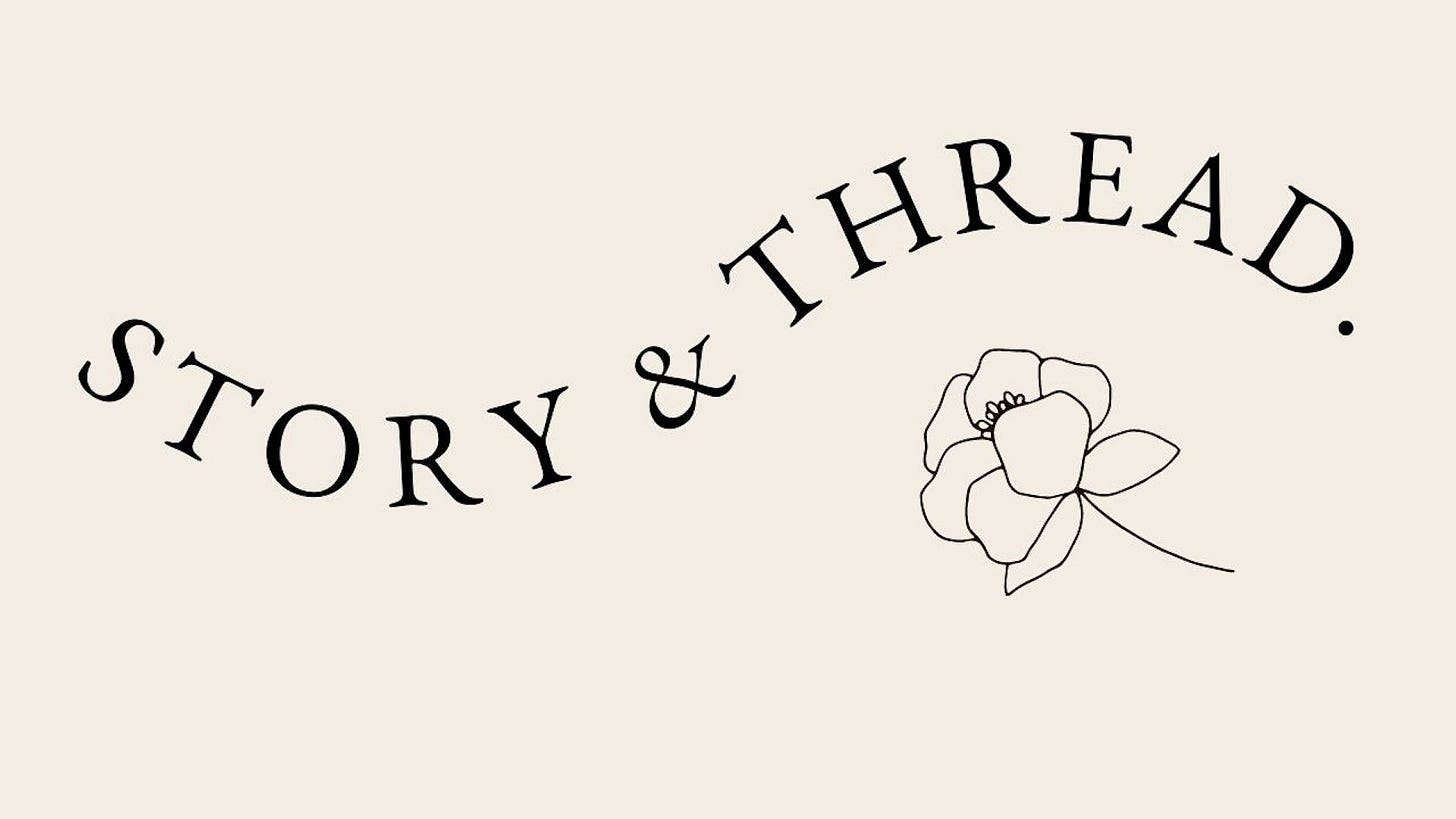


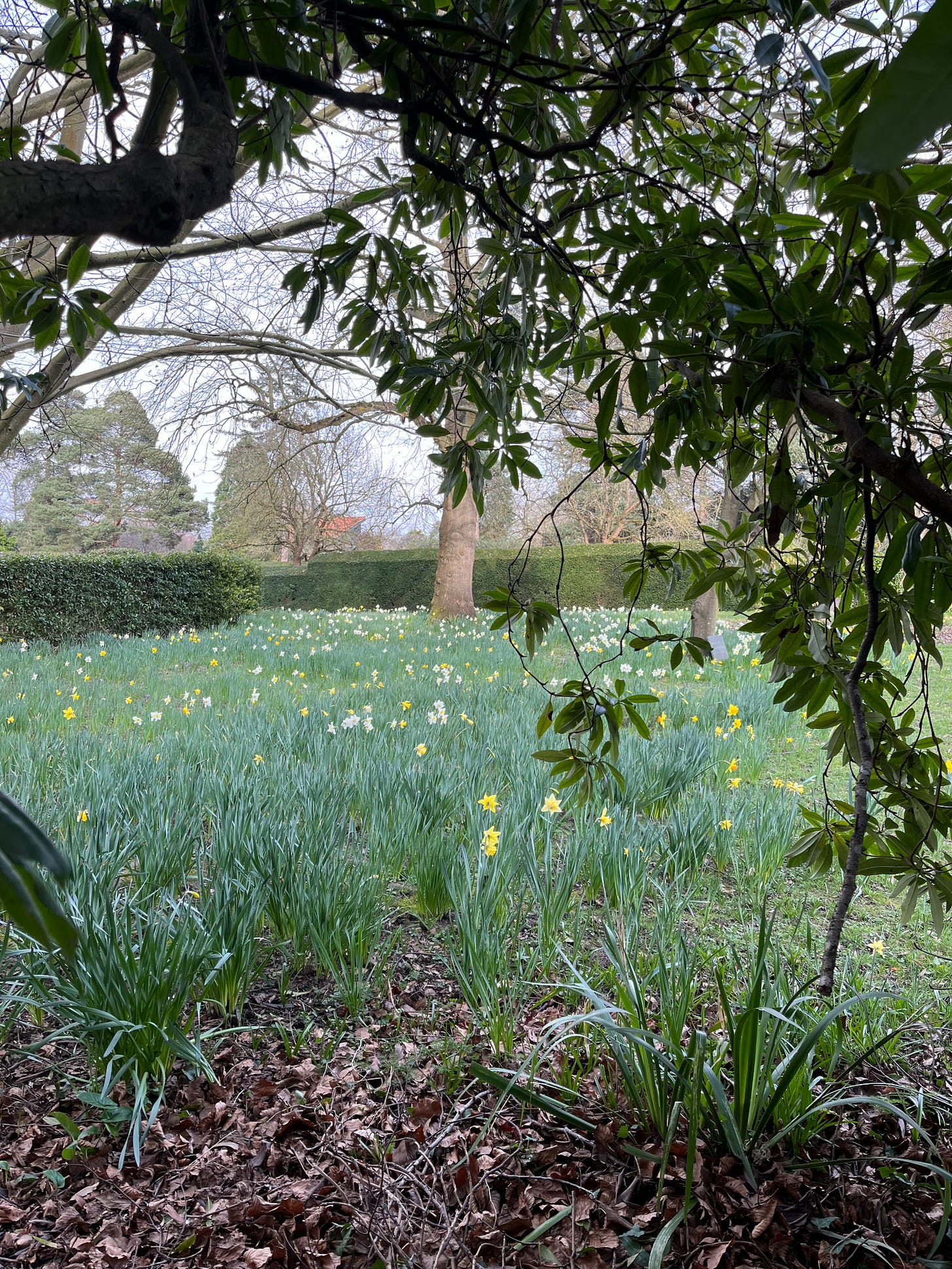
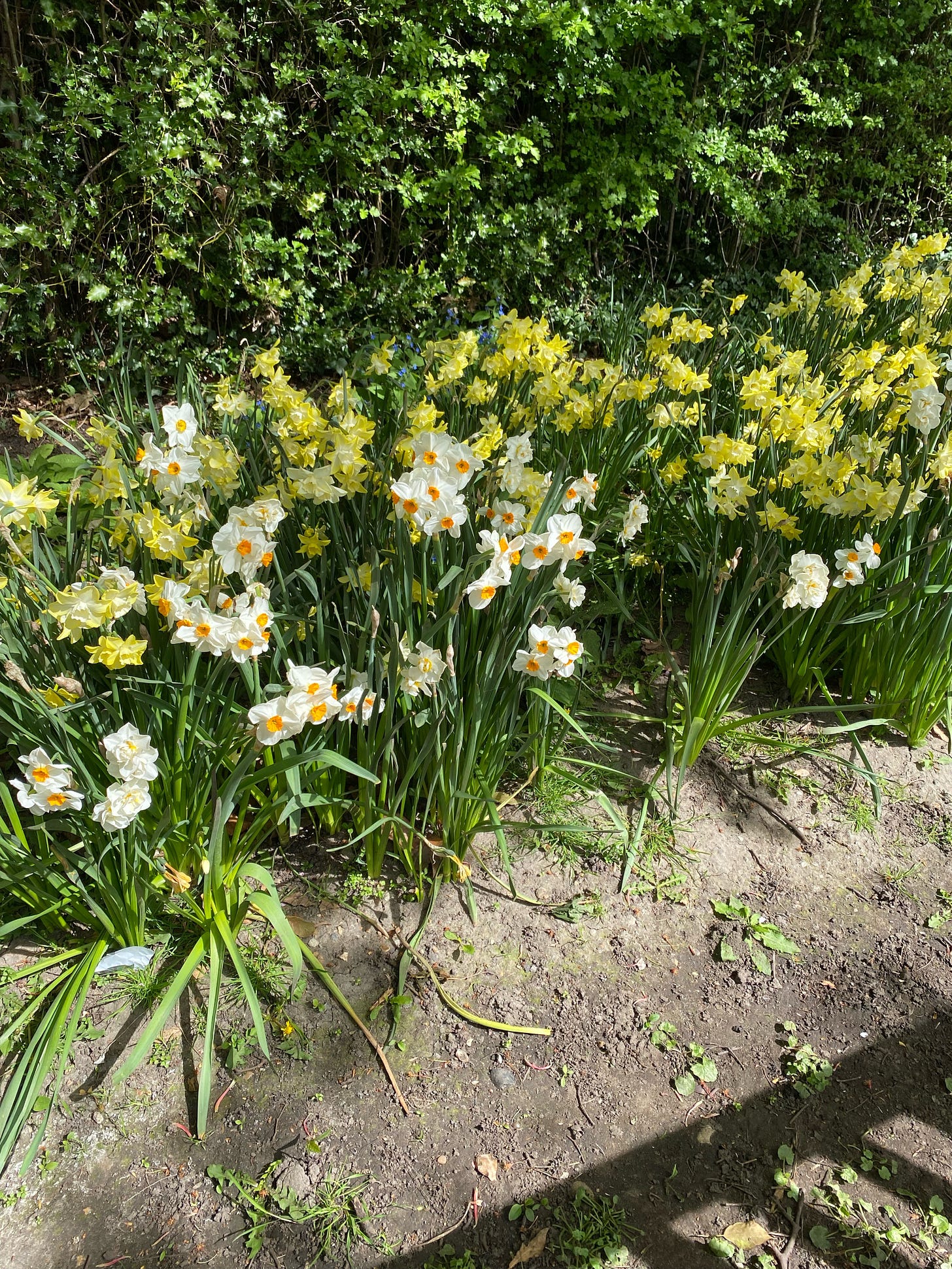
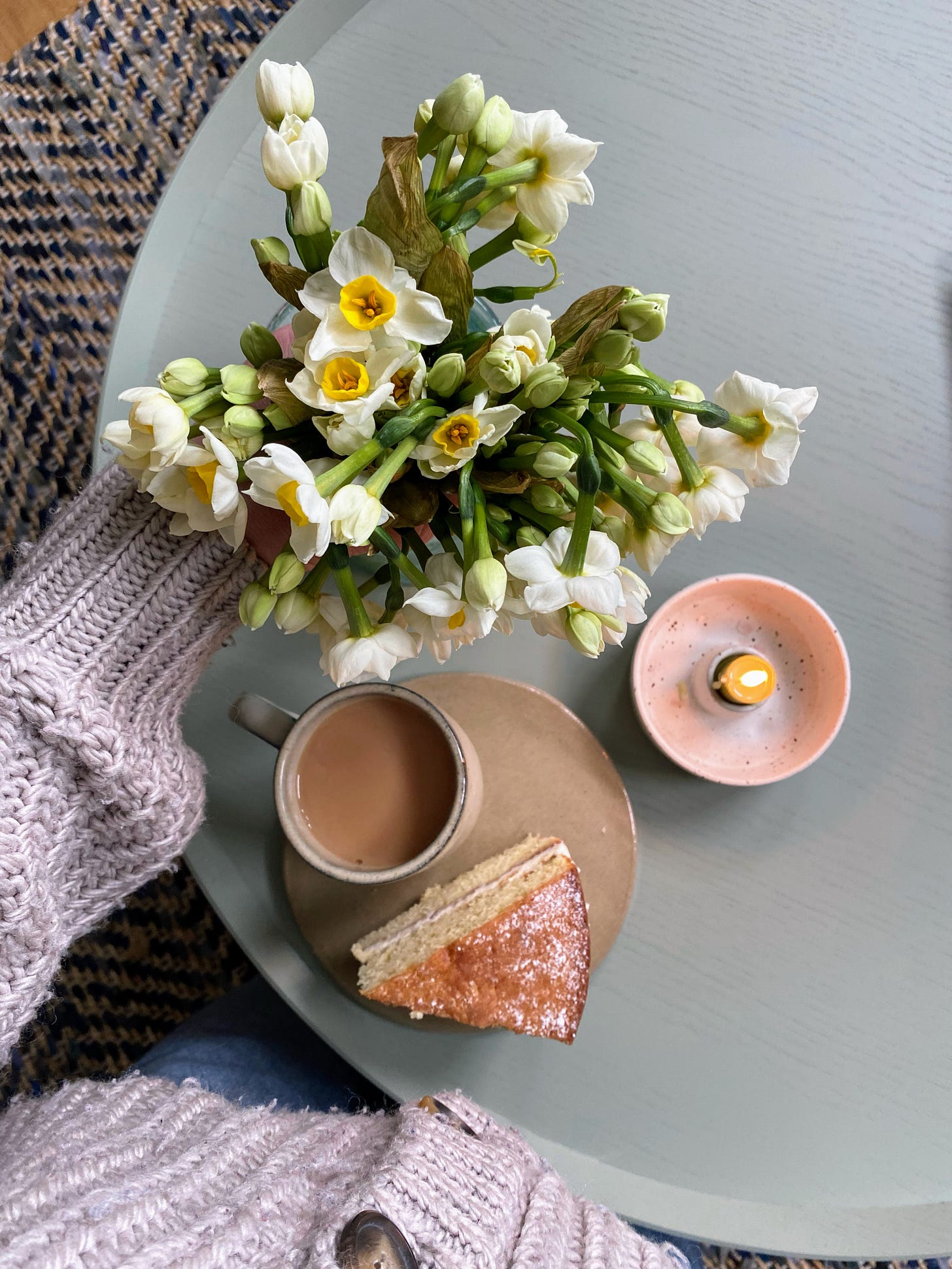
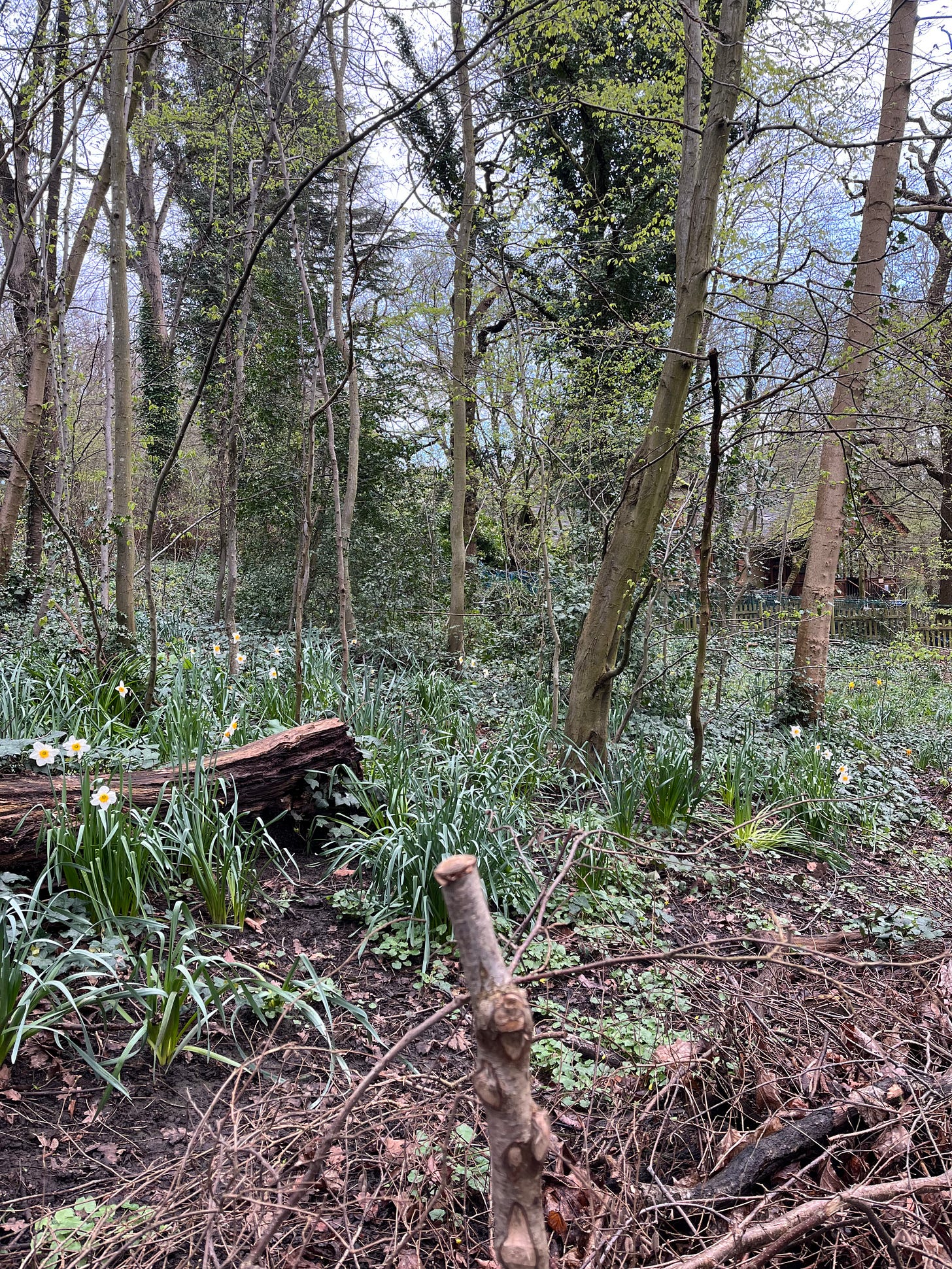
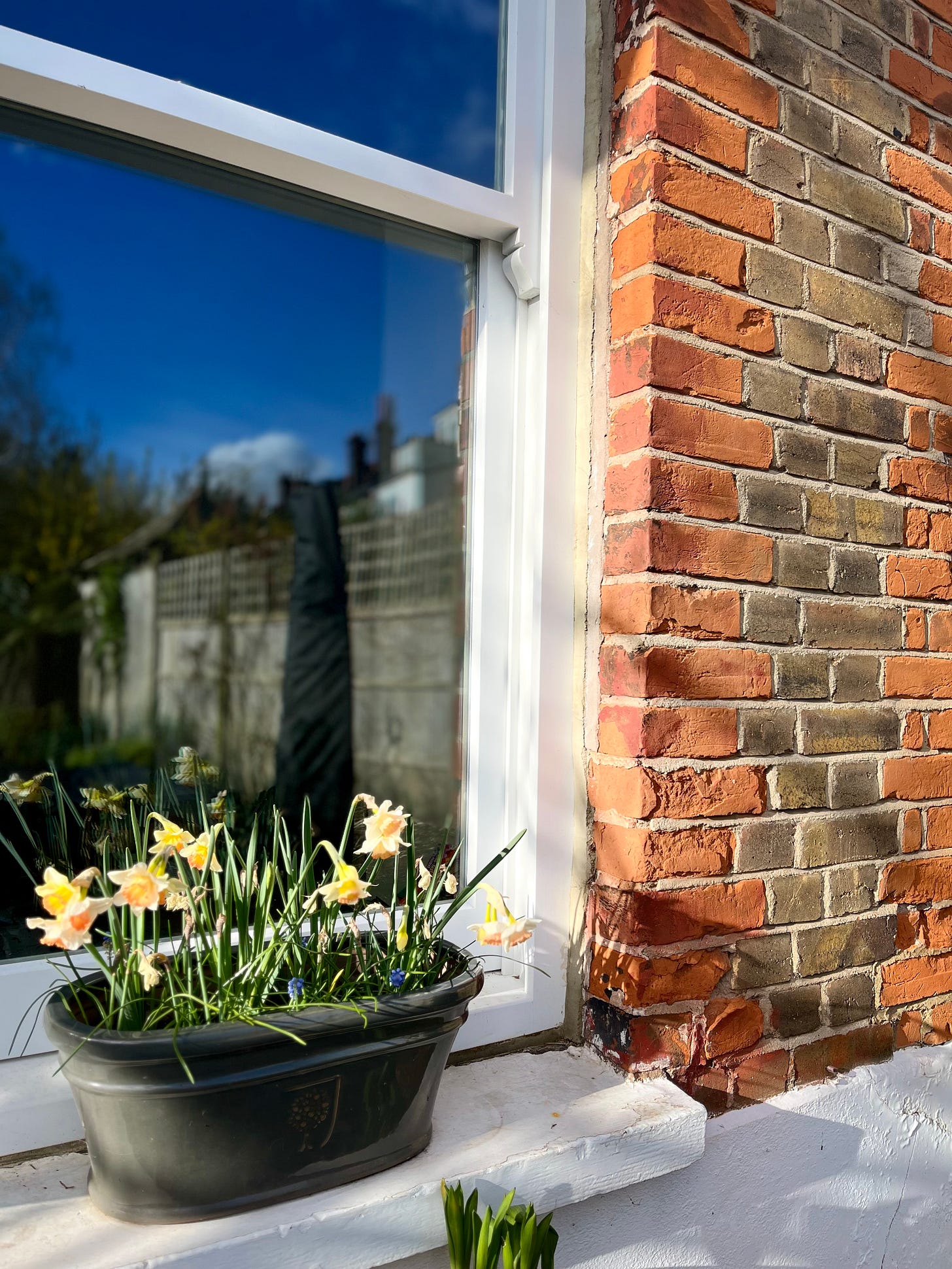






So so wonderful to receive the wisdom from the daffodil through your words! I adore your shares in this series and it makes me want to get out into the garden straight away. I adore the daffodils… although crocuses for me always steal my heart for that inkling of hope after winter (I remember seeing them when I was first pregnant with Sophia and had started to emerge from the first trimester underworld journey… a bit like Persephone I can now see). I think the yellow pop of colour that bursts out of the most surprising of places is like a call to the sunshine… a definite reminder of things rebirthing and coming back to life. Thank you for taking me on the journey. Xxxx
Oh gorgeous golden daffodils 💛
It's Autumn in our part of the world and we've just tucked our bulbs into damp soil for their winter hibernation. Enjoy those Spring beauties!